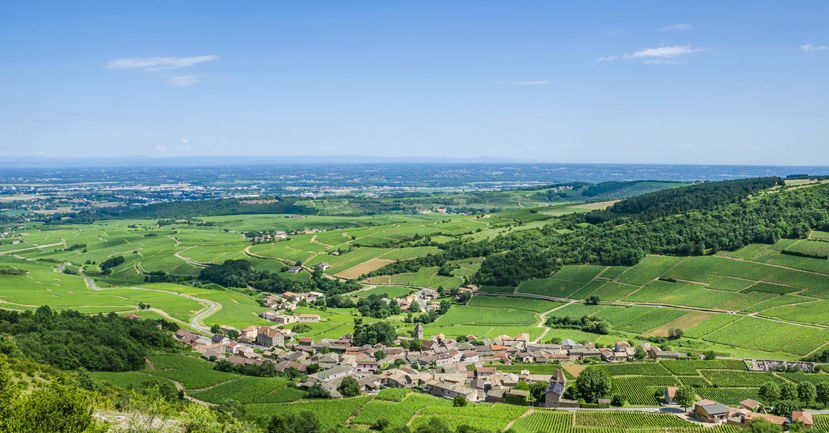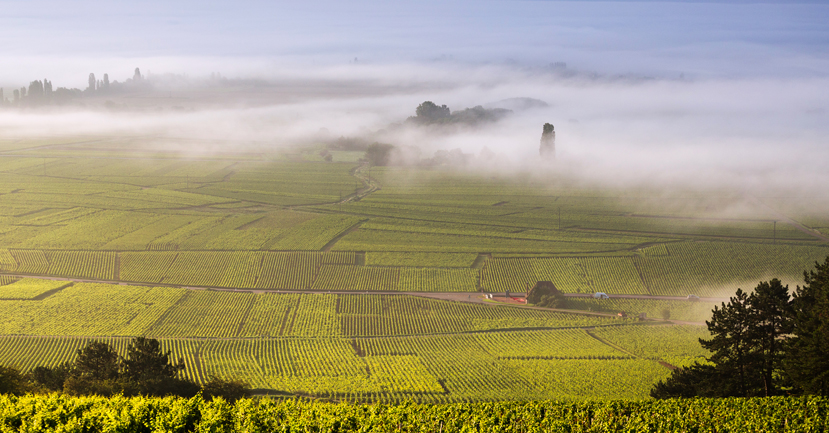BLOG
Wine Trends in 2020: Burgundy by the Numbers
Andrew Jefford
Tasting and Trends

As a wine region, Burgundy embodies both the past and the future. On the one hand, Grands Crus that have been celebrated for centuries remain in the hands of multi-generational family domaines. On the other hand, outside investment, adjustments to the appellation system, and the realities of climate change (which have necessitated adaptations in viticulture and winemaking) have all combined to bring about change in recent years. This duality lies at the heart of modern Burgundy, and here to sort much of it out for us is acclaimed wine writer and critic Andrew Jefford. Below, he takes a look at the numbers that have shaped Burgundy’s recent history, and what that means for its future.
The Regional Economy
The price of viticultural land in Burgundy is rising steeply. Official SAFER (Société d’Aménagement Foncier et d’Etablissement Rural) figures show that the price of AOP Bourgogne land has risen on aggregate from €31,000/ha to €44,000/ha between 2011 and 2018, while red Premier Cru land has gone from €460,000/ha to €680,000/ha, white Premier Cru land from €1,150 million/ha to €1,590 million/ha, and Grand Cru land from €3,600 million/ha to €6,250 million/ha. Individual land sales, though, can be much higher than this, though official sales prices aren’t always in the public domain. Press reports suggest that LVMH purchased Clos des Lambrays in 2014 for €11.5 million/ha; that Stan Kroenke purchased 80 per cent of Bonneau du Martray in 2017 for €11.4 million/ha; and that François Pinault of Groupe Artémis purchased Clos de Tart in 2017 for between €26 million/ha and €30 million/ha.
The way that Burgundy classifies its vineyards changed in 2017, bringing the appellation total down from 100 to 84. The most significant change is the addition of 14 Denominations Géographiques Complémentaires (DGCs) to the basic ‘Bourgogne’ appellation together with an overall reduction in the number of regional AOCs from 23 to 7. There is a new village appellation for the Auxerrois village of Vézélay, while Marsannay Rosé is now included in the Marsannay appellation.
Pouilly-Fuissé is to get a system of Premiers Crus. Reports suggest that 182 ha (or 23% of the entire appellation) will be classified as Premier Cru — a much higher percentage than in Burgundy as a whole (10%). The 22 Premiers Crus will be:
- Aux Bouthières
- Aux Chailloux
- Le Clos de Solutré
- La Frérie
- Pouilly
- En Servy
- Vers Cras
- Au Vignerais
- Aux Quarts
- Le Clos Reyssier
- Les Chevrières
- Le Clos de Monsieur Noly
- Le Clos
- Les Brulés
- Les Ménétrières
- Les Perrières
- Vers Pouilly
- Les Vignes Blanches
- En France
- Les Crays
- La Maréchaude
- Sur la Roche
The system is expected to be instituted for the 2019 harvest, and is awaiting ratification by INAO at the time of writing. Note that other Burgundian appellations also have Premier Cru projects in hand, and specifically Marsannay on the Côte d’Or, as well as St-Véran, Pouilly-Loché and Pouilly-Vinzelles in Burgundy.
The Bourgogne-Côte d’Or appellation is to be launched in February 2019, covering wines from the 2017 vintage onwards. It marks a step above the basic Bourgogne appellation in that planting densities are set at 9,000 plants/ha rather than 5,000 plants/ha; yields are set at 66 hl/ha for white wines and 58 hl/ha for red wines. It is available for around 1,000 ha of vineyard at the edge of every village in the Côte de Nuits and the Côte de Beaune, just outside the official ‘village’ land.

In the Vineyard
Relations between wine growers and their non-wine-growing neighbours and rural tourists have become strained in recent years, particularly over the issue of vineyard sprays, which can drift in the wind and affect the health of adults and children living in vineyard areas, and over the pollution of water courses by vineyard chemicals. Burgundy has prepared a Charter entitled ‘Engager Nos Terroirs Dans Nos Territoires’ to address some of these problems (some of its findings are resumed in an English document produced by the Bourgogne Wine Board called ‘Understanding the World of the Winegrower’). Winegrowers are reminded that they cannot spray in winds of more than 19 km/hour. The use of chemical herbicide is to be phased out entirely, and the use of ‘CMR’ chemical agents (those which may cause cancer, mutations or have a toxic effect on reproduction) is to be limited to downy mildew treatments only. Research to develop resistant strains of Burgundy varieties is ongoing. Those living near vineyards or visiting vineyards are reminded that only one tenth of vineyard work in Burgundy is carried out by machine, that a tractor in a vineyard does not always mean vineyard spraying, and that the vines are not sprayed systematically but only when disease threatens.
Global Warming
Climate scientists predict complex impacts from global warming, and so it has proved in Burgundy. Wild weather conditions have often manifested in Burgundy in recent years as hail storms, notably affecting the red-wine villages of the Côte de Beaune in three successive vintages: 2012, 2013 and 2014. In 2017, Burgundy completed its ‘hail shield’: protection of 42,000 ha of vineyard by a system of hail canons installed in upland farms. If a 40% chance of hail is forecast, the cannons ‘seed’ hail clouds with silver oxide pellets, leading to the formation of smaller, less damaging hail stones. From June 2018, hail nets have been permitted in French vineyards, though each appellation must make an individual application for permission to erect these.
Another problem is late spring frosts, possibly connected to the disruption of the polar vortex causing bulges of arctic air in spring to obtrude into the northern hemisphere. This is made worse by increasingly early dates for budburst. April frost reduced the overall Burgundy harvest by 30% in 2016, and only mass action by growers lighting straw fires to produce a smoke filter just before dawn evaded a similar catastrophe in 2017.
When both hail and frost can be averted, though, global warming can help produce vintages of outstanding quality, as happened in 2015 and 2018.
In the Cellar
The influential Henri Jayer was firmly set against the use of whole-cluster fermentation for Pinot Noir, since fruit was often harvested prior to full ripeness in his day (pre-1996) and the stems left green flavours and bitter tannins in the wine. Most Burgundy wine-growers followed Jayer’s example. Now, though, ripeness is much better understood, and many growers and negociants (e.g. Chanson) are now returning to whole-cluster fermentation. Some great names (e.g. DRC, Dujac) never abandoned the practice.
The premature oxidation (‘premox’) of many white burgundies continues to preoccupy consumers. Most studies have concluded that there is no single cause. The multiple causes include the use of clones of Chardonnay which furnish grapes with thinner skins than do vines derived from massal selection, the use of fully ripe fruit, gentle pressing by pneumatic presses producing juices low in phenolics compared to forceful pressing with plate presses which produce juice rich in phenolics, the use of reduced or zero levels of sulphur during vinification, the reduction or abandonment of batonnage, poor fill levels in bottles, the use of recycled glass and defective corks. Premox problems are diminishing as a consequence of response action on these fronts. Many leading white burgundy producers, notably, are now bottling their wines using DIAM corks (include Fèvre, Bouchard Père et Fils, Jadot and Leflaive).
The Wine Market
The price of burgundy continues to spiral upwards, driven partly by short harvests in 2010, 2012, 2013 and 2016, but also by booming global demand (hence the rapid rise in land prices). All-time record prices were achieved at the Hospices de Beaune wine auction in November 2018, with an average increase in price of 18.97% over the 2017 results. Wine investors have also turned their attention from Bordeaux to Burgundy, where the quantities of wine available are always much smaller, exaggerating price hikes further and leaving traditional burgundy consumers dismayed. Newer fine-wine consumers, in particular in Asia, are happy to pay these ‘prestige’ prices.



